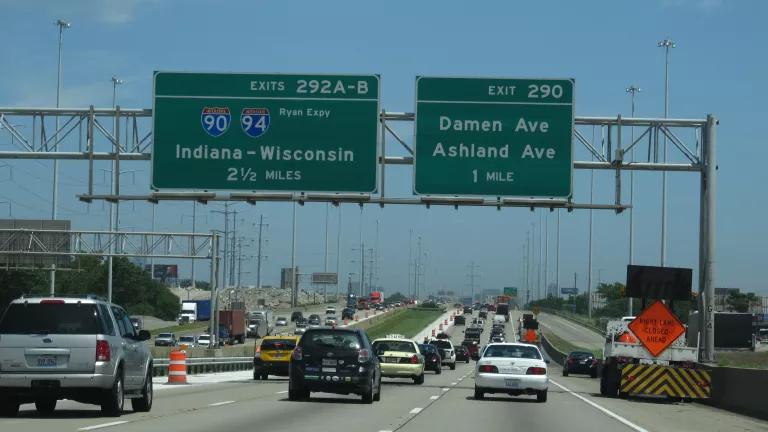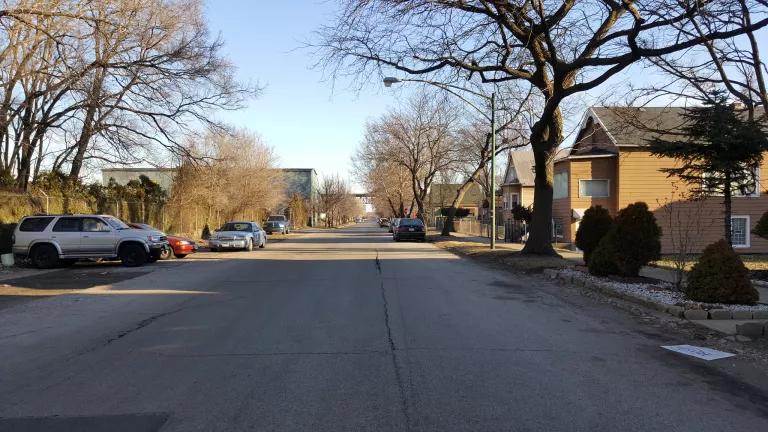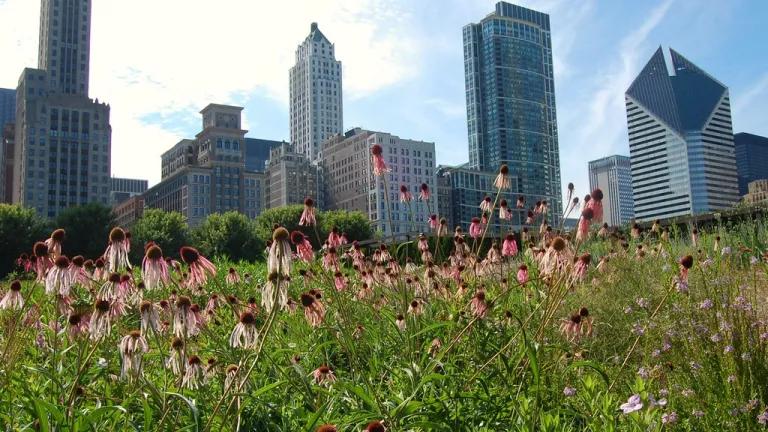Environmental Justice Protects Public Health
Chicago’s health care professionals are calling on the city’s Department of Public Health to be accountable to policy decisions that put communities at risk. This is a major step in our fight for environmental justice because racism is a public health crisis.

Chicago’s health care professionals are calling on the city’s Department of Public Health to be accountable to policy decisions that put communities at risk. This is a major step in our fight for environmental justice because racism is a public health crisis.
To fight back against polluting industry, I have had to become an investigator, zoning policy expert and learn about health impacts of various toxic chemicals that are released near my neighborhood’s homes, schools and parks. Environmental justice is about equity. Chicago Southeast Siders deserve to be healthy just like our North Side neighbors.
Every Spring, Chicagoans look forward to warmer weather, but Southeast Siders like me, still drive around with the windows rolled up to avoid breathing in the toxic air that surrounds us .
This is yet another year that Southeast Siders are protesting the relocation of another notorious polluter, the General Iron scrap metal recycling facility and the list of potential polluters looking to locate in our community continues to grow. The city of Chicago and the Chicago Department of Public Health (CDPH) have delayed, but not denied, an operating permit to General Iron/Reserve Management Group (RMG).
The city still has not made the decision to stand with us, but thankfully our healthcare professionals have.
On March 8, one month after Southeast Side activists started a hunger strike to protest General Iron, over 500 public health and health care workers and over 70 local and national organizations stood in solidarity with us by signing a letter, circulated by Health & Medicine Policy Research Group and the Collaborative for Health Equity Cook County, and holding a press conference demanding that Chicago Mayor Lori Lightfoot and CDPH Commissioner Dr. Allison Arwady deny the permit to relocate the facility.
In the letter, they recognized the proposed move of a heavy polluter from the predominantly wealthy, White Lincoln Park neighborhood to our predominantly Latinx, Black, and working-class Southeast Side is a textbook case of environmental racism—and will worsen health inequities.
At the news conference, Dr. Steven Rothschild, Chair of the Department of Family Medicine at Rush Medical College, said that allowing General Iron/RMG to move to the Southeast side contradicts CDPH’s mission of reducing air pollution on the Southeast Side and “would worsen the situation for the community and cause more disease that doctors like me see on the front line.”
Public health professionals strongly urged the city to live up to the promises it outlined in its Healthy Chicago 2025 Plan and the Chicago 2020 Air Quality and Health Report, which include promoting antiracist policies, advancing health equity and creating a future where “communities disproportionately burdened by pollution” will be able to “breathe clean air free of harmful pollutants.”
The city responded by taking a small step in the right direction: delaying the decision regarding the permit. But our public health allies didn’t decide to stop there. On March 23 they sent a second letter to Dr. Arwady calling for a full denial of the permit, holding her and CDPH accountable for the city’s public health and air quality plans, responsibilities, and commitments, which include environmental justice.
As a third-generation Southeast Side native in a city plagued by environmentally racist policies, I’ve grown too accustomed to fighting for basic human rights. Southeast siders are mothers, fathers, sons, and daughters. We have lives, responsibilities and jobs; it shouldn’t be on us to inform ourselves about the impact of industry on our communities. And it shouldn’t be on us to keep polluters out of our neighborhoods. Yet, after a long day of work or getting our kids ready for school, we’re still trying to get our foot in the door and have a seat at the table at CDPH meetings. And even when we’re invited in, we still find ourselves getting shut out.
Though we’ve attended CDPH meetings for the last several years, the department didn’t tell us there was lead and arsenic in our little league field; we found out from a newspaper article. We also discovered that inspections of the foul odors we’ve been reporting in our neighborhood went down by 60%. The city’s refusal to readily provide us with information gives us a false sense of security and makes us think it’s ‘normal’ to be exposed to toxins where we live.
While we hoped our frustration would be enough for our elected officials to finally prioritize our health above profits, it was healthcare professionals joining us and amplifying our message that made all the difference. In this time where we’re relying on the expertise of our doctors and healthcare workers more than ever, their voices added even more credibility to our public health concerns. They’re committed to making sure we don’t have to do this alone.
It’s one thing for residents to call on the city to enact policies that center on public health and community expertise in decision making, but it’s another for public health, healthcare and other health and social service workers to hold their local health department accountable and urge it to follow through on the health equity and racial justice commitments it has been making for years.
Other parts of Chicago are becoming green and getting sustainable infrastructure—changing with the times—while my neighborhood is stuck in the industrial revolution. In its Healthy Chicago 2025 Plan, the city promises communities like mine that in the future we can expect an “ideal state” where our air will be free of pollutants. It’s difficult to think of these beautiful visions for our neighborhood when we’re constantly sidetracked by petcoke piles, manganese contamination in our air and our soil, lead and arsenic in our little league fields, and now the relocation of General Iron.
Our doctors stand with us and agree: This way of living shouldn’t be anyone’s ‘normal’. Now, it’s time for our city to listen to the experts and stand with us too.




